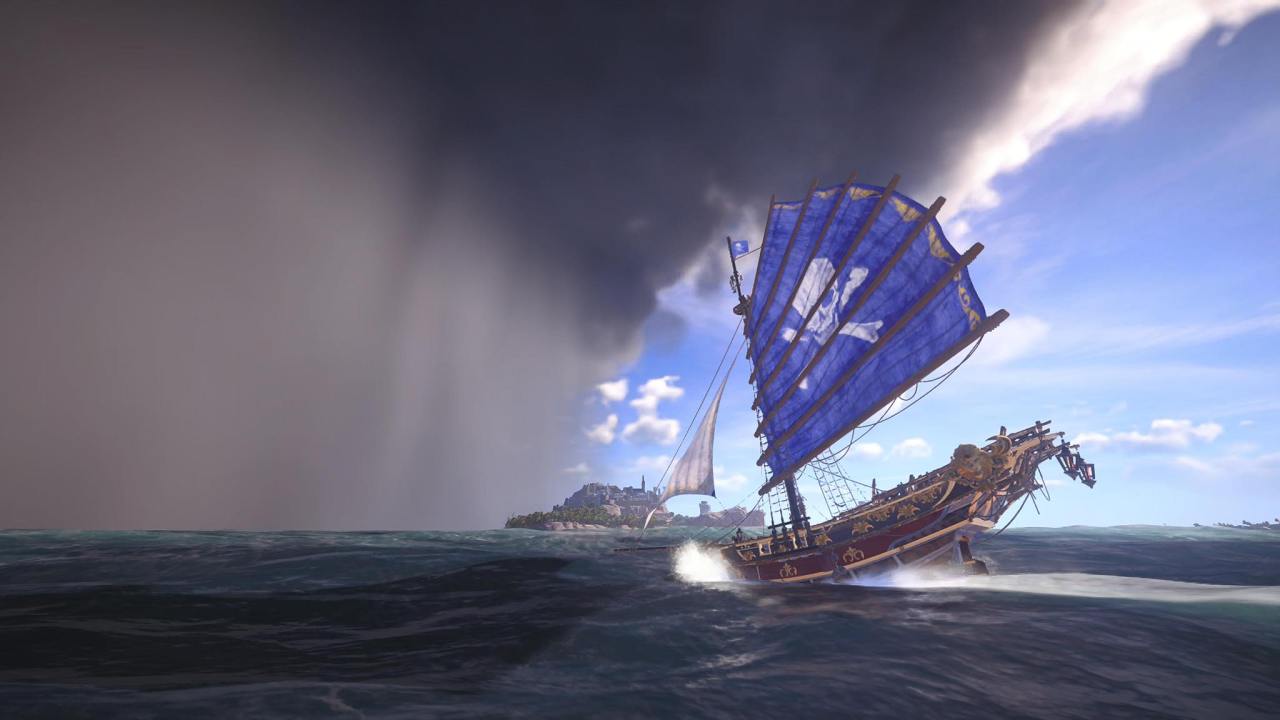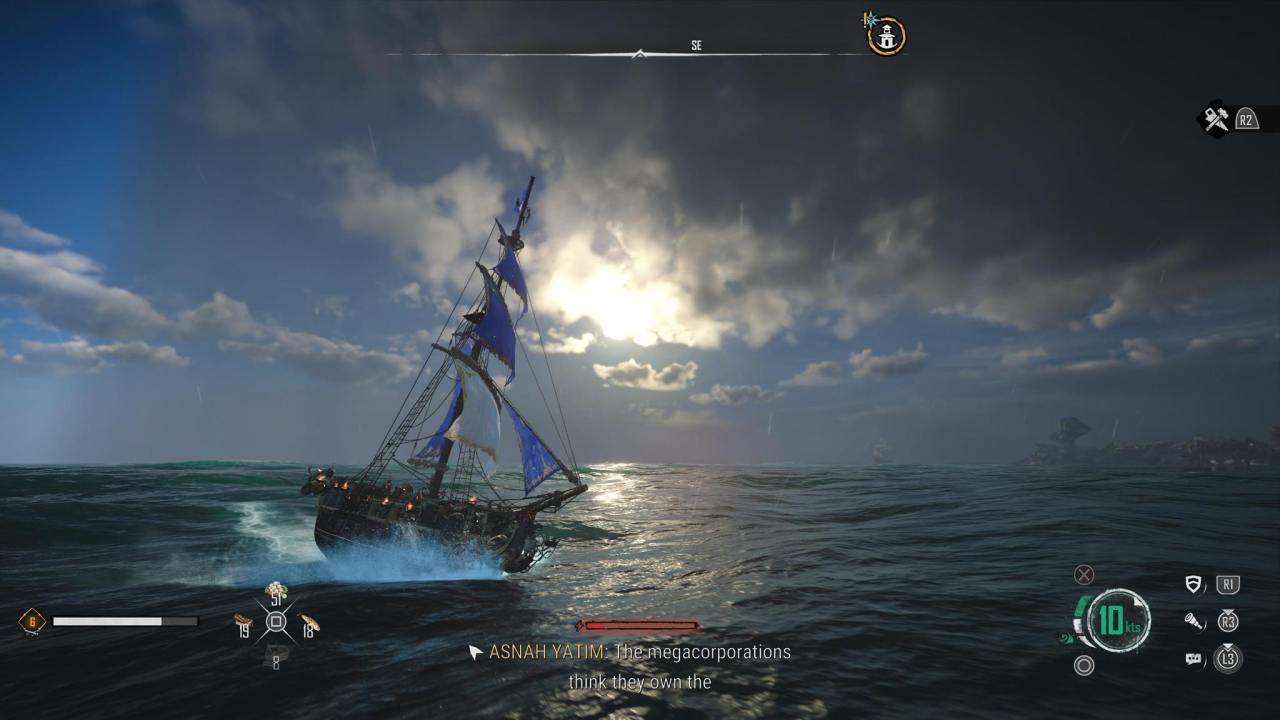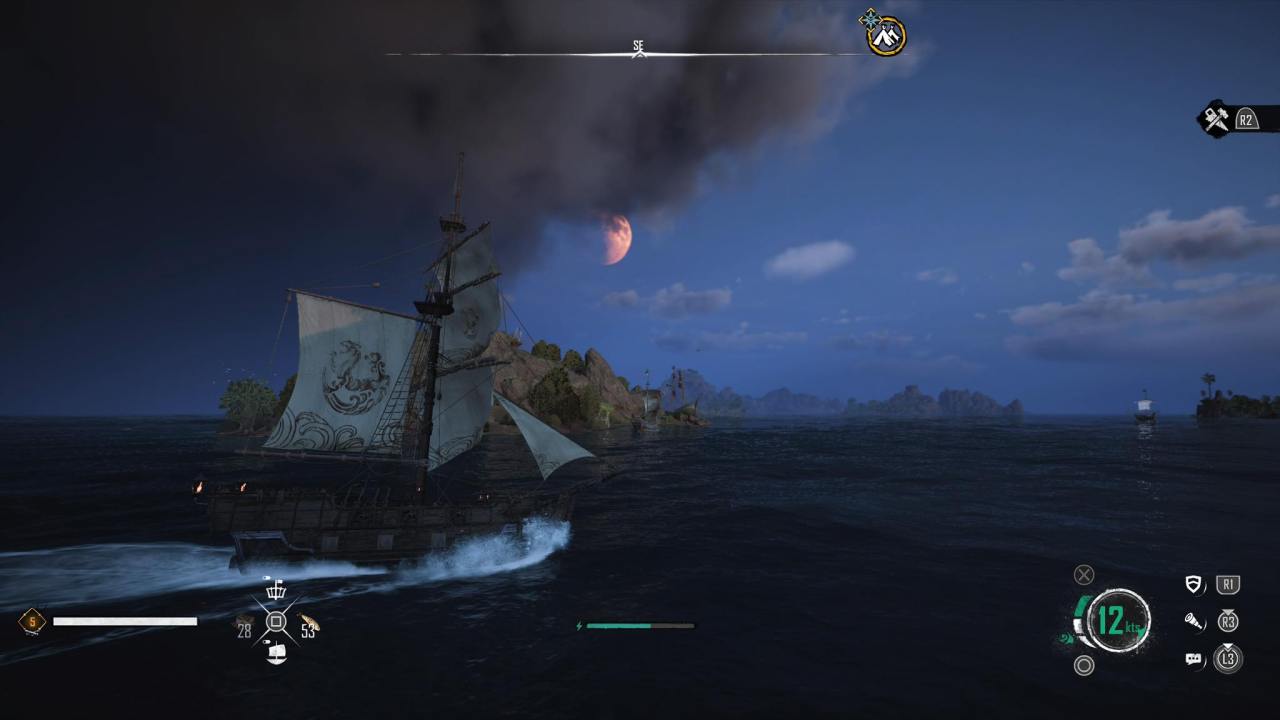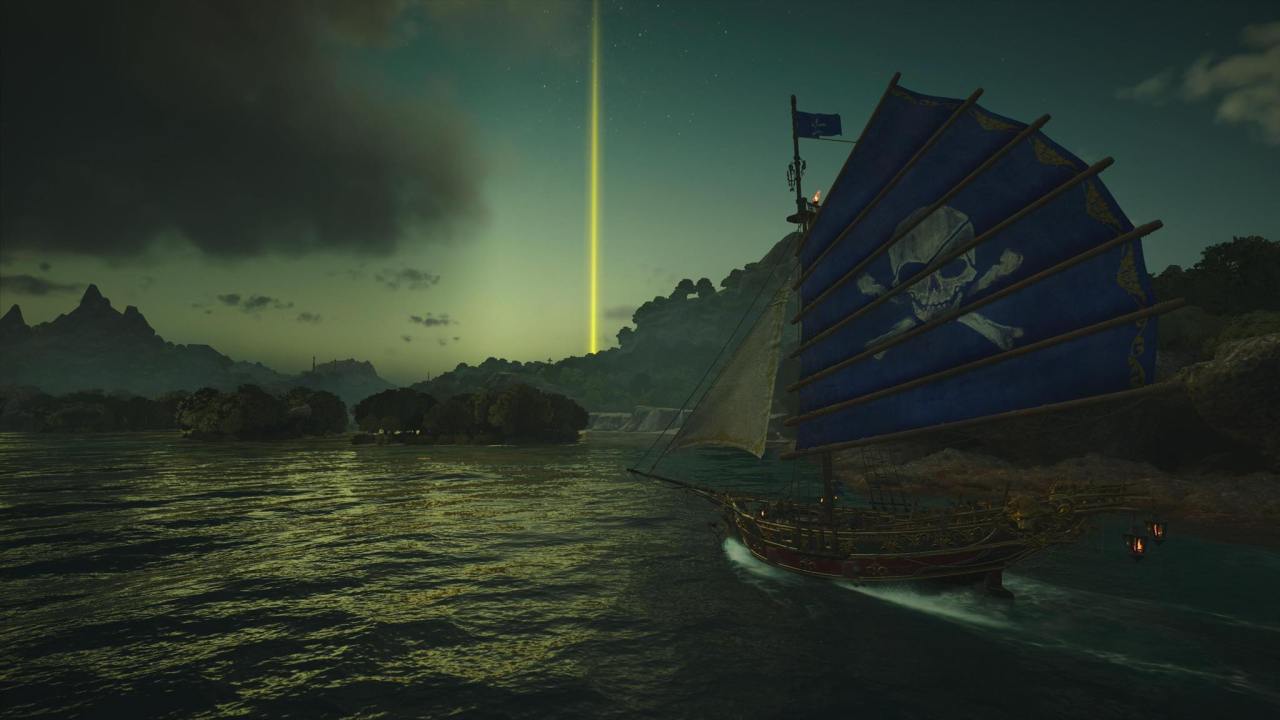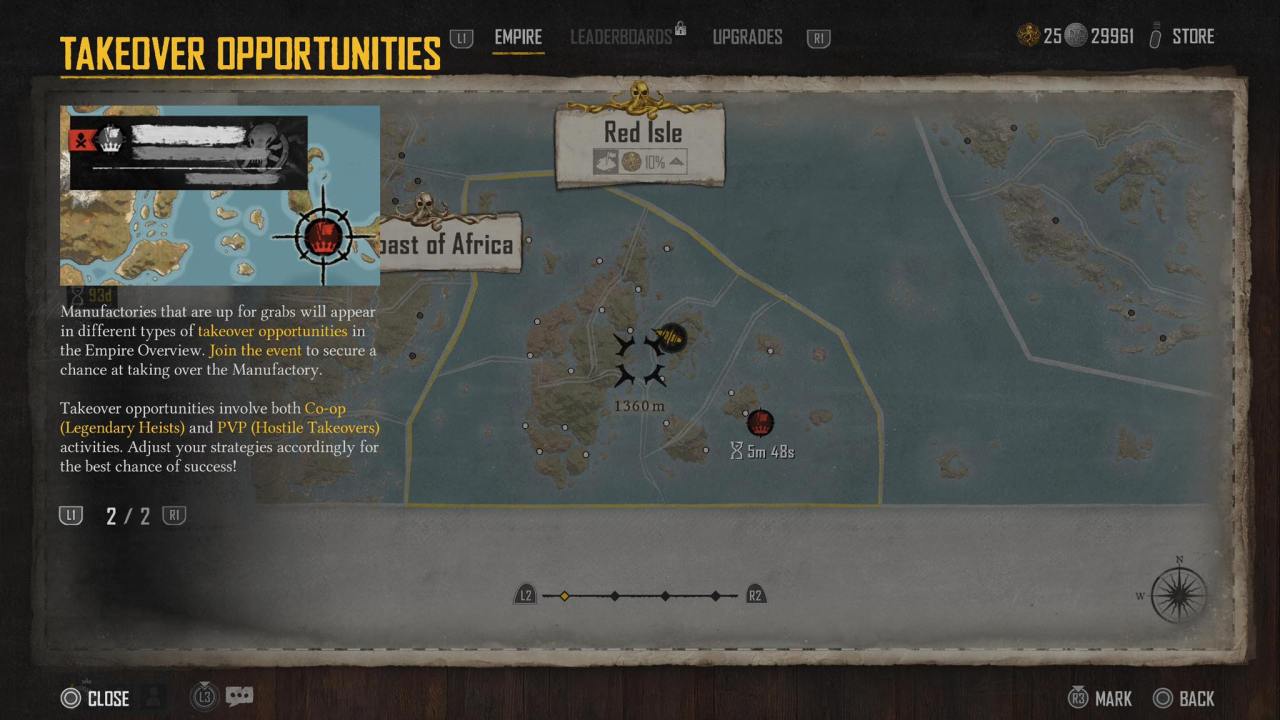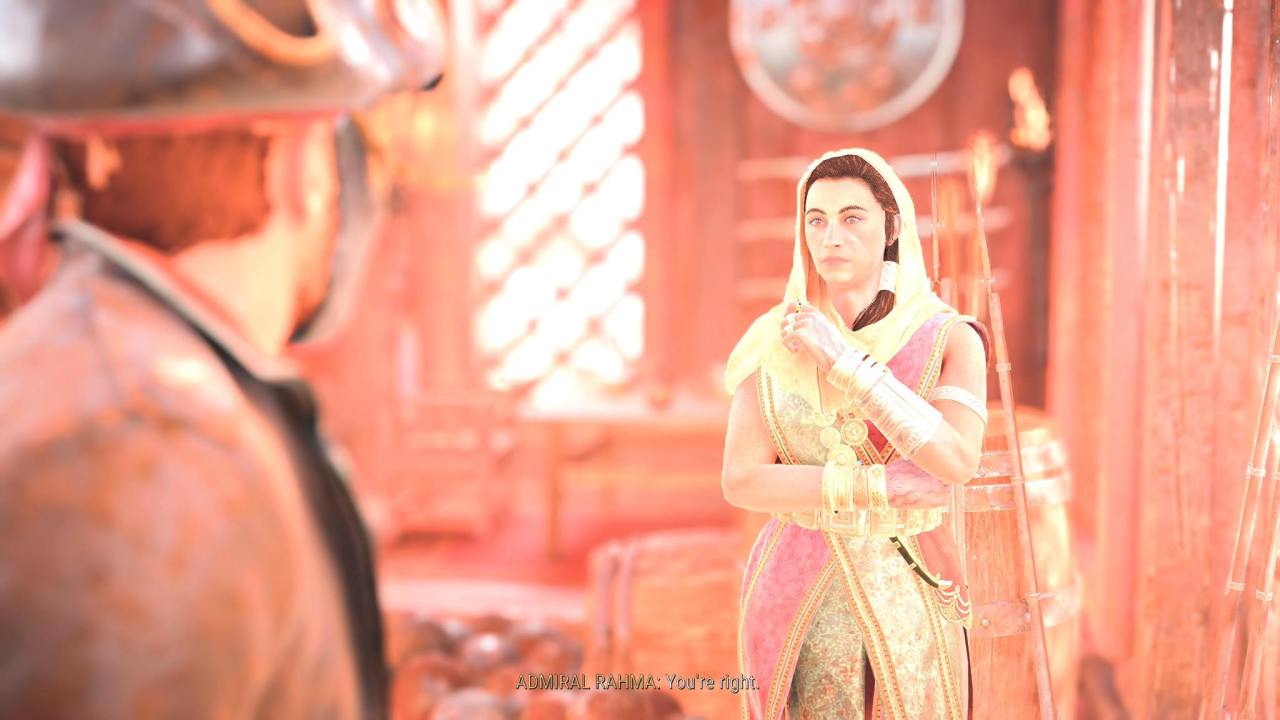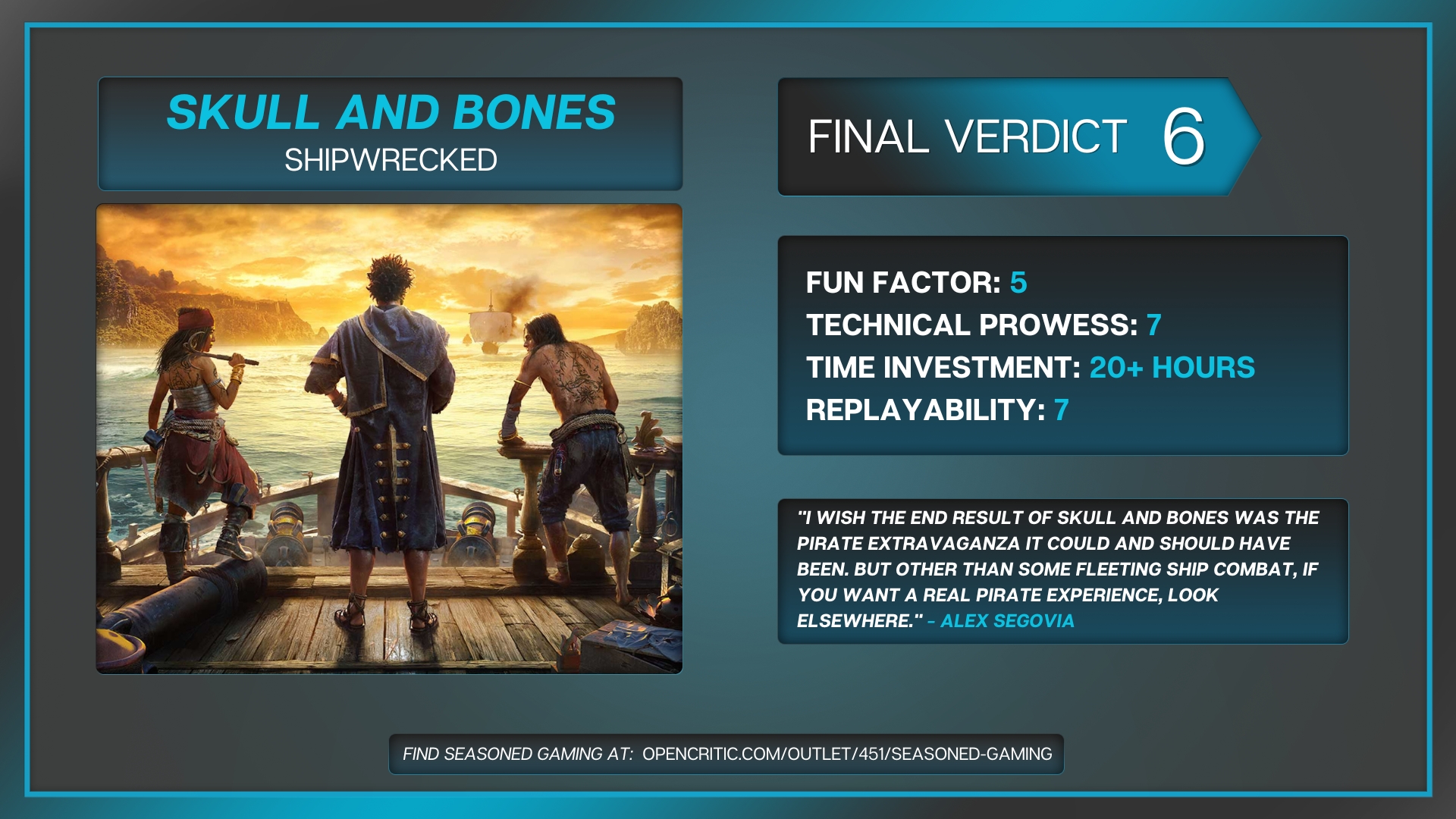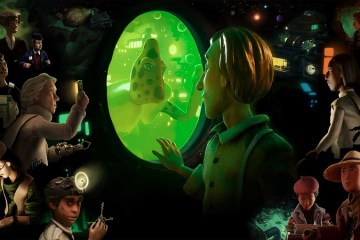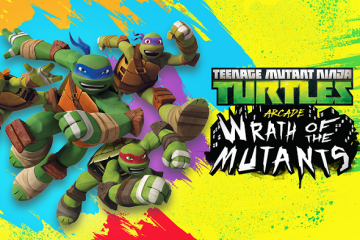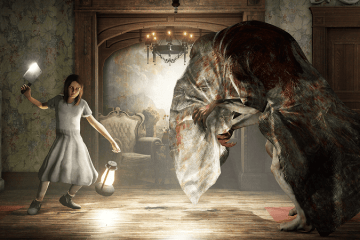If there was one common feedback Ubisoft definitely got after the release of 2013’s successful Assassin’s Creed IV: Black Flag, it was simple: make a full on pirate game. And for good reason. This one-off sequel in the long running Assassin’s Creed series managed to successfully build upon a side element from the maligned Assassin’s Creed III to deliver the dream pirate open-world game many had wanted, and it was all saddled in the midst of a franchise with a lot of baggage. So why not just take all these great elements (naval combat, sea exploration, swashbuckling combat, etc.), remove the baggage, and make it its own thing?
It’s from this initial concept that Ubisoft’s decade-long follow up Skull and Bones was born from. After tons of delays since its initial 2017 reveal, lots of reworked concepts throughout those delays, and the promise of being this AAAA production that would deliver on the wants and desires many had all these years prior, does Skull and Bones deliver the goods? Or does it deserve a place in Davy Jones’ locker?
Pirates Beware
Skull and Bones is set during the “Dawn of Capitalism” around various islands and peninsulas of the Indian Ocean in the late 1600’s. This always online, live service pirate game starts with your player-created mute pirate having survived a shipwreck as he/she starts the journey to climb their way up through different notorious pirate ranks, longing to become the biggest, baddest, most well known pirate of the seven seas. I wish, however, that I could say there was more in the way of context or even a story beyond this flimsy setup.
Though it presents itself as a pirate RPG, to say this game barely has a story would be putting it nicely. It is just a series of vignettes with the flimsiest narrative throughline to get you to climb up the piracy notoriety ranks on your way to becoming a Kingpin. If you follow the main path in Skull and Bones, the most you get regarding a “story” is via two fairly meaty quests focused on a foul-mouthed traitorous English pirate named Captain John Spurlock and an anti-Dutch, anti-capitalism warmonger named Admiral Rhama.
These two, being the only notable NPCs in a game otherwise filled with NPCs that are as compelling as cardboard cutouts, present stories filled with the most uninteresting cliches and nary any interesting twists or intrigue, just serving as basic setup to keep getting you out into the sea. If what you are looking for is an intriguing pirate tale, you absolutely won’t find it here. Even finishing these quest lines ends in the most uninteresting, unceremonious whimper.
If you were hoping that, despite a fairly rote, uninteresting main tale, the game could still make up for it via maybe some interesting side stuff, let me sink that hope. Almost every side activity available in this game is a glorified fetch quest (which, ironically, is also a main quest problem). You will either be sent to the four corners of the Indian Ocean to plunder some undockable towns, fetch materials from boats you may find in the various trade routes for desirable materials, find hidden treasures in the different “social space” on foot sections, hunt notorious pirates, and so on and so forth. Rarely are any of these activities interested in building out its world, and the only faintest whiff of world building/storytelling can be found in the visual design of the various places or its random letters you can find. It’s just clear Ubisoft wasn’t interested in making this world one you should invest in beyond a superficial level.
Under The Black Flag
Despite its complete disinterest in making this a compelling pirate adventure to get lost in from a narrative sense, Ubisoft absolutely wanted Skull and Bones to at least look and feel like the kind of pirate game that delivered on the promise of what initially inspired it. When it comes to reviewing a game, you sometimes want to review it on its own merits instead of what it is not, but in the case of Skull and Bones, it is very hard to acknowledge this game’s existence without the specter of Assassin’s Creed IV: Black Flag looming over it, especially when so much of the look and feel is ripped straight out of that game.
As a game that tries to live up to the promise of what people wanted Ubisoft to do in excising the best parts of 2013’s Assassin’s Creed game and removing the franchise baggage from it, the way Ubisoft tackled the assignment is peculiar, to say the least. It seems that they laser focused on how much people loved the naval side of that previous adventure and just doubled down on making Skull and Bones a ship-only game with on-foot social hubs as the thing that breaks up the gameplay.
This focus is a double-edged sword. On one hand, considering how good it felt to sail the high seas in Black Flag, I can say sailing around in Skull and Bones still feels as good as that game from a decade ago. But by making controlling the ship and the various weapons the main source of gameplay and nothing else, Skull and Bones also sacrificed a ton of the pirate game fantasy its source of inspiration nailed so well a decade ago.
The beauty of the pirate fantasy in Assassin’s Creed IV: Black Flag wasn’t just a ship that could sail all corners of the high seas and engage with the various boats that loomed in the horizon. It was the way the game could seamlessly let your character explore the various different islands you came across from outside the main cities (which, in this game, are only social spaces), engage in swashbuckling combat on the ships that you could capture after you damaged them enough (in this, you capture a ship, it smash cuts to a cutscene, and dips), explore shipwrecks at the bottom of the sea (no such thing here), etc.
Now, I’m not saying everything Black Flag did was perfect (endless tailing missions, anyone?), but there was a certain flow to the different elements of that game that was a perfect blueprint to build upon for a great pirate game. Skull and Bones ignores a lot of that blueprint to only focus on doing ship-combat. It doesn’t add any more compelling reasons to make up for the lack of the rest of the elements that would fulfill the pirate fantasy, and it is something that costs the game dearly. When paired with the game’s fetchy nature and the shortcuts it takes for gameplay variety (like a random minigame, which looks like it could be from a mobile game, to fetch wood or food from scattered trees at the edge of an island), it is really hard to play through Skull and Bones and not think about what it could have been, especially since this isn’t the first rodeo from Ubisoft with this kind of game.
Prizes, Plunder, and Adventure
Despite all that is missing, there is something weirdly compelling about the focused nature of Skull and Bones that still manages to pull through even when so much threatens to drag it down. There is a reason a lot of people did love the naval element before, because sailing the high seas on the feeling of a grand adventure can still be a pretty zen, captivating experience for the most part. To the benefit of the game’s almost complete disinterest in having any form of narrative drive, the advantage of unshackling the player is how this entire world is simply open for you to explore at your leisure. Obviously, that means there is a danger that you may wander to places you are not meant to be in early on, but play your cards right, and this untethered exploration can reward you pretty handsomely with some advanced ships and weaponry based on your curiosity alone.
Looking for better rewards is the literal lifeline of this game. As is typical with many Ubisoft games these days, this is another open world game with pretty harsh level scaling where you have to keep upgrading your gear to even up the playing field with the different enemy ships you encounter in the harsh seas. Any enemy ship you encounter that is at least two levels above you will make you fight for your life, and it sometimes can be frustrating when you randomly have an enemy ship wander into your combat area that is 5 levels higher than you that just completely decimates you with little opportunity to fight back.
The way to level up and prevent this from happening is a mix of you finding the right schematic to build your next ship upgrade (whether it’s armor, better weaponry from traditional cannons, torpedoes, rockets, mortars, etc), and then sailing around to find the right elements to build said upgrades. Few times you’ll earn the right upgrades via main mission or side mission completions, but the true way to properly level up is completely up to you engaging on the game’s crafting element. It will absolutely determine your survivability and could up or diminish your enjoyment heavily if you don’t make it a priority.
Complications Arose, Ensued, Were Overcome
One big element of this game to definitely consider if you are interested in picking it up: more than probably any other live service game I have engaged in recently, it is imperative that you have at least one friend to play with you at all times since the way the game has scaled a lot of its activities makes it almost a necessity to succeed without hair-tearing frustration. Usually, when I play these live service games, a lot of their content is properly tailored to be doable if you are playing it solo, with only endgame activities absolutely requiring more players to continue further, which is the right way to do it (and was the way I even engaged in recent live service efforts from Ubisoft, like their two The Division games). Doing activities in Skull and Bones solo not only makes the game feel way duller, but it will make every activity feel harder and more tedious, even if you are at or slightly above the recommended level.
When I brought a friend or two into my party fleet, everything started clicking into place, and the coordination that could be achieved with everyone laser focusing on the enemies added a level of exhilarating euphoria that is just not there when attempting to do things solo. Unless a random player can jump in and help you if you are playing solo (and there are systems in place where you can put out a call for any potential player in your session to come help you with a Plunder activity or a world event), it’s just a much better experience if you can bring a real life friend with you at all times.
It’s clear that was Ubisoft’s true intent when designing a lot of the activities in this game, and just engaging them in solo play will lead you to endless trial and error exercises in the final stretch of the game that will make you want to tear your hair out while screaming obscenities to the point that family members may come to check and see if you are OK. Or, so I heard, something like that happened.
The Ends of The Earth
As tradition dictates with a live service game, the staying power hinges a lot not only on how good a game is, but how it doles out content delivery over time. Skull and Bones is definitely a clear case of, “The real game begins at the end,” especially with how the road to becoming Kingpin can feel as dull as watching paint dry (play with friends and it’s a different story). When you finally become Kingpin, new systems and activities become available to you, like an in-depth Black Market through a secret society called “The Helm,” where you can start scouring the game’s entire map, do territory control, and acquire settlements where you can start creating assembly lines that will start producing a new gold currency (“Pieces of Eight”) for further weapon and ship upgrades.
During the endgame, you can also start PVPVE activities, like the “Hostile Takeover,” a more elaborate version of the game’s Plunder mode where you and other players battle for control of different settlements, hinging on how many enemy (and player) ships you take down in the designated areas for control. Because, theoretically, you’d be at a stronger level at this point, doing other activities, like “Legendary Contracts” and “World Events,” becomes more feasible at a higher level. And even other side activities, like fighting legendary Sea Creatures and even Ghost ships, become an activity to pursue on the quest for a higher level.
While I appreciate that, at the very least, the game becomes more involved in the half that’s supposed to hook you over time, I’m not sure, at this point in time, the carrot at the end of the stick is enough for me to continue spending more time on the endgame besides just expanding territory control in this game’s quite extensive simulation systems (which I’m personally not a fan of, but I can imagine some people would dig). Getting to the Max Level 11 requires an extensive grind, where getting all the top level pieces costs way too much currency. While I appreciate slightly more activity variety in this game’s half, it still feels like too little variety that may require extracting blood from the stone at a certain point.
There is also the elephant in the room that, as a live service game, Skull and Bones has also basically laid out the entire Year 1 roadmap where, theoretically, more activities are going to build this endgame content into something that remains more enticing and involved than it is at launch. While it is always good to see a live service game show that there is a lot of content planned in the pipeline, as is always the case, I can only review what’s currently here. While the endgame is certainly better than the early game, it’s still flimsy enough in my eyes to where the only fun I gather with it is goofing off with my friends as we scream stupid pirate one-liners while we fend off hostile takeovers and the like. And I’m not sure how much longer that will hold for me.
Dead Man’s Chest
Considering the rather insane development cycle that this game went through since 2013, it is to Skull and Bones‘ credit that the game manages to not feel like a stitched together mess of different ideas. Powered by Ubisoft’s now long-in-the-tooth Anvil engine, the game manages to both look really pretty in spots and also woefully dated in others. At first glance, you wouldn’t be remiss looking at a glance and thinking it just looks the same as its 2013 progenitor. I would say, at least from a world perspective, there are some things done to lightning and environments that still make it pleasing to the eye at a certain angle. And the fact that you can also run it at 60fps in the consoles (though through a sometimes really obvious/jarring image reconstruction technique that can look quite ugly in spots) is a nice addition.
As for the game’s technical stability, this is certainly a game where I was surprised at how solid it was performing in its early goings. But that’s before it becomes a buggy mess in its later half, feeling worse when you consider the game’s long gestating period and Ubisoft’s AAAA claims. For one, texture detail starts clipping in and out like a strobe-light effect that can be very distracting during the endgame sections. Lightning effects can become really inconsistent where sometimes the image will get so bright for no foreseeable reason, and smoke effects will disappear randomly in the middle of battle.
The worst thing I got, bug wise, happened right at the end of the main quest, where the boss battle I was fighting kept going out of bounds from the mission parameters, which kept de-registering the damage I was doing and essentially restarting the fight three times. While the game didn’t crash on me on the PlayStation 5 version I played for review, my friends on PC did report some crashing, so buyer beware on that version.
On the sound side of things, Skull and Bones certainly does sound the part, but it is nothing too memorable or remarkable. Some of the pirate accents we get sound authentically pirate-y, while others sound a little too try-hard and phoned in. And while it was nice getting to hear some of your crew’s sea shanties as you sailed the high seas, it often came with the lack of an otherwise truly forgettable score.
Not to keep beating the same dead horse of bringing up the game that gave birth to this one, but when I think of how much said game’s soundtrack, composed by Brian Tyler, delivered on the swashbuckling feeling of being a pirate, it’s insane that this fully pirate-centric new game doesn’t even come close to delivering that.
Fare Thee Well
It’s hard to not look at Skull and Bones as anything other than a missed opportunity. Even trying to remove the context of its progenitor and its ludicrous development timeline, it is hard not to look at what the game is and think the perfect pirate experience escaped from our very grasp into something lesser than it could have been.
Try as it might, the ship-only nature of the game feels stretched thin, even when it sometimes sings with some wild weapon combinations. The lack of any reason to care from a narrative perspective makes the entire experience forgettable beyond its fleeting player created moments, especially if you are playing with friends, which is an absolute necessity. And while the promise of a robust endgame is always nice, beyond its current territory control, I don’t see much that makes me stick around until the new content comes around.
I’m glad the game escaped development hell after all it went through. I just wish the end result was the pirate extravaganza it could and should have been. But other than some fleeting ship combat, if you want to get the real pirate experience, look elsewhere.
You can find Seasoned Gaming’s review policy here
